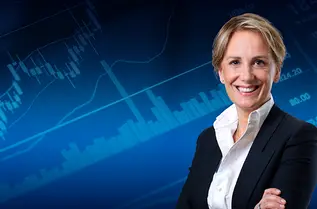Summary
- Biden exit from the race: Current US President Joe Biden announced on Sunday that he will not seek re-election and endorsed Vice President Kamala Harris as the Democratic nominee. Senior members of the Democratic party have expressed their support for Kamala Harris. Donations for the campaign have begun to rise after Biden’s decision.
- Kamala Harris potential nomination: The Democratic convention in Chicago from August 19th to 22nd is a potential venue for the nomination of Kamala Harris, which would draw attention to the party and the new candidate. If Harris becomes the official candidate, she would inherit the funds of the Biden campaign.
- Investment implications: With over three months remaining until the elections, there is a significant level of uncertainty surrounding the potential outcomes. It's too early to think of a Harris or a Trump 2.0 trade, as the change in the Democratic nominee somewhat resets the election path. Markets will continue to focus on the current earnings season and on the potential actions of the Fed, while the implications from the election could become more prominent after the summer when the campaign will enter its hottest phase.
What happened?
On Sunday 21 July, the current US president Joe Biden announced that he will not accept the nomination, although he will remain President until the end of the term. He also endorsed the current Vice President Kamala Harris to replace him as the Democratic nominee. Some senior members of the Democratic party, such as Former President Bill Clinton, Former Secretary of State Hillary Clinton, Massachusetts Senator Elizabeth Warren and Pennsylvania Governor Josh Shapiro also provided their support to Kamala Harris.
When is the potential nomination of the current Vice President Kamala Harris going to occur?
With Biden exiting the race, it is likely that Kamala Harris would become the Democratic nominee. Her presidential campaign has seen rising donations after President Biden announced he will not seek re-election. However, it is important to note that Harris would still need to be selected by Democratic delegates and go through a process to become the official nominee. In the last week, senior Democrats, including Nancy Pelosi, who supports Harris, have voiced support for an open selection process to strengthen Harris’ democratic legitimacy. The official nomination could occur at the Democratic convention in Chicago to be held August 19th to 22nd, or earlier through ‘mini primaries’, or a virtual vote. If Harris becomes the official candidate, she would inherit the funds of the Biden campaign.
What are the chances of Harris versus Trump?
Biden's decision has opened up an unprecedented phase in the election. While Harris’ poll results are similar to the Biden against Trump poll results, her chances of winning will depend on various factors, including party unity, donor support, her choice for vice president, and her performance in the spotlight. It is worth noting that some notable competitors have already declined to run against her. Although Trump's chances of winning have increased after the presidential debate and the attempt on his life, a Trump victory should not be taken for granted. The choice of Vice President J.D. Vance does not appear to have increased Trump’s potential to appeal to a greater number of voters. His VP choice and speech at the Republican Convention is likely to fail to attract more moderate voters.
Markets brace for election uncertainty, turning attention to the earnings season and the Fed’s actions.
What are the market implications of this change in the Democratic nominee?
Market reaction to the news has been pretty muted at the time of writing, with a fall in the US dollar in early trading on Monday (22nd July), a marginal movement in the 10-year US Treasuries and an upward trend in equity futures. In terms of the implications on markets, the election outcome is still highly uncertain.
The polls have had a strong impact on the slope of the US treasury curve in recent weeks. Since the 1st of June, the correlation between daily changes in the polls and movements in the US Treasury curve between the 5yr and 30yr areas has been 86%.

It is too early to define a potential “Harris trade”, but even to have a specific trading strategy for a potential Trump 2.0 administration, as there is ideological uncertainty regarding its goals and policies. There are also significant ideological clashes that the Trump administration would need to address, such as the approach towards China, inflation, tariffs, fiscal expansion and the desire for a weaker dollar.
There are various different ‘school of thoughts’ on Republican foreign policy which are currently trying to influence Trump. These competing groups include: the isolationists/restrainers who want the US to refrain from too much interference in foreign affairs; the prioritisers, who want US foreign policy to focus on China; and those who still believe the US should remain the main decision-maker in global affairs. Apart from these groups, Trump’s foreign policy will be shaped by individuals in key positions. It is as of yet unclear who he would nominate. Finally, his foreign policy will be shaped by his desire to cut deals and experiences from his first term.
Given this high level of uncertainty, the market will likely focus on the results of the second quarter earnings season which has just begun. The mega caps have been the great winners in the first half of this year, but investors are now expecting earnings growth to improve in other areas of the market. outside the mega caps This could help supporting a broadening of the rally which as begun in recent weeks. On the bond side, markets are now turning their attention to the September Fed meeting that could result in a rate cut.
As pointed out also in our recent Mid-year Outlook, we currently favour a mildly positive allocation to risky assets, with a preference for equal weighted and/or fundamental approaches in equity markets to address the current high concentration risk, and a positive stance on duration. We also look for additional sources of diversification in emerging markets, commodities (in particular gold) and real and alternative assets.






